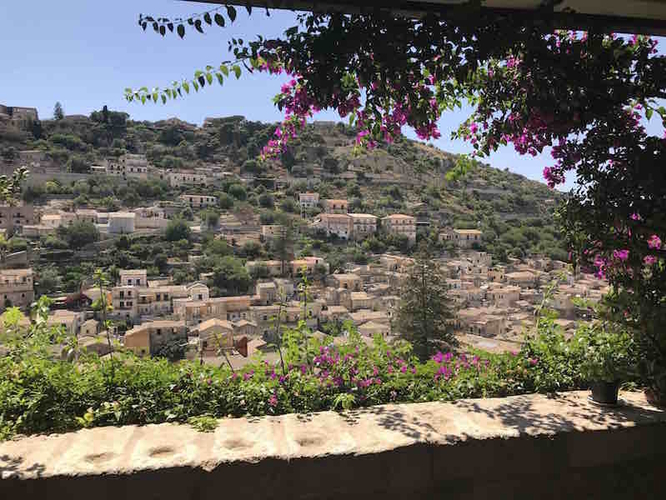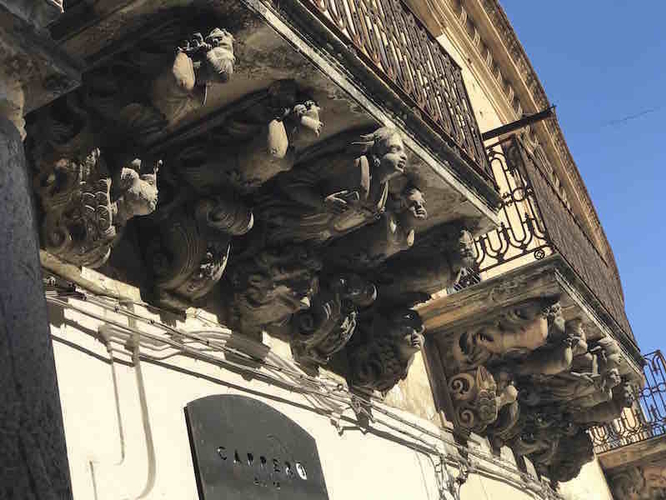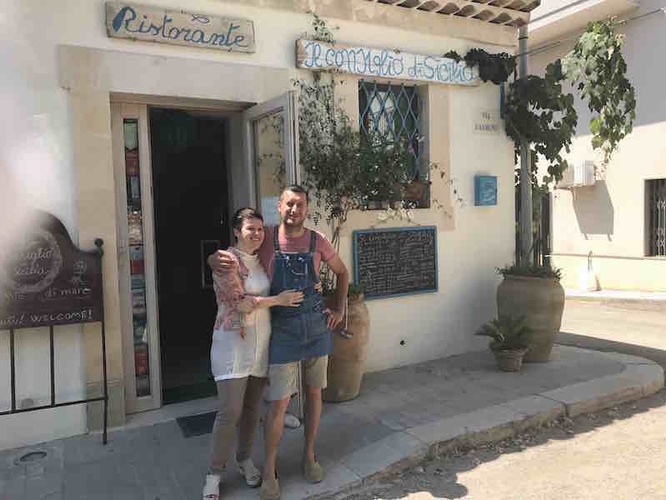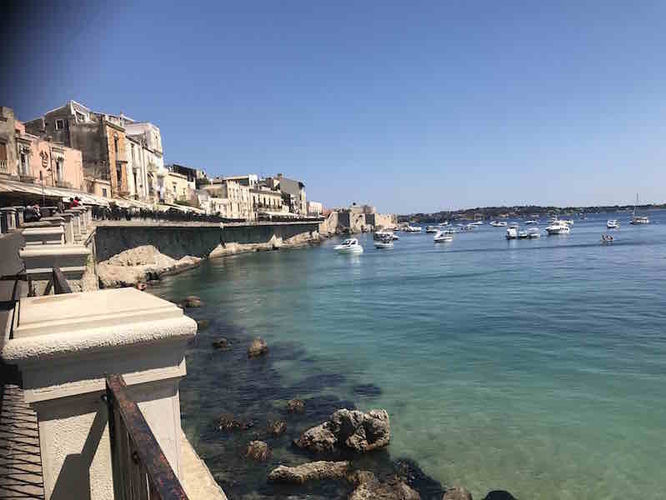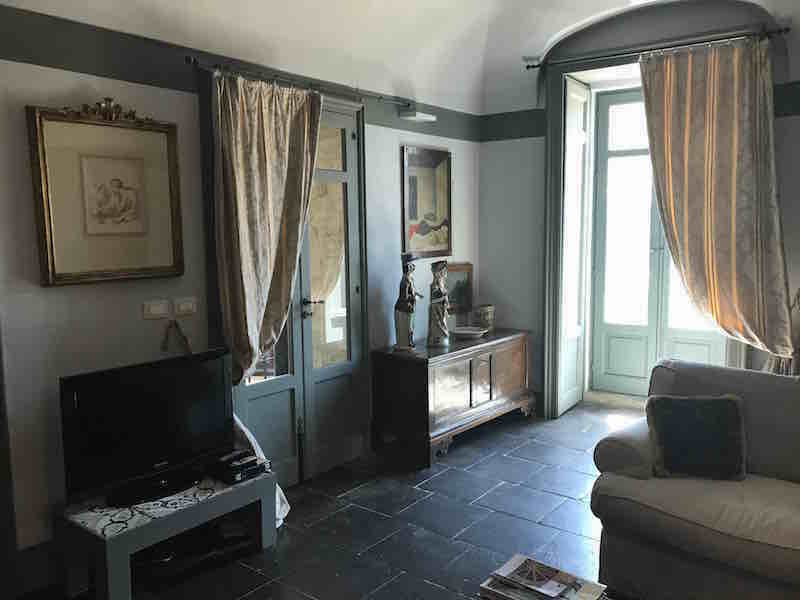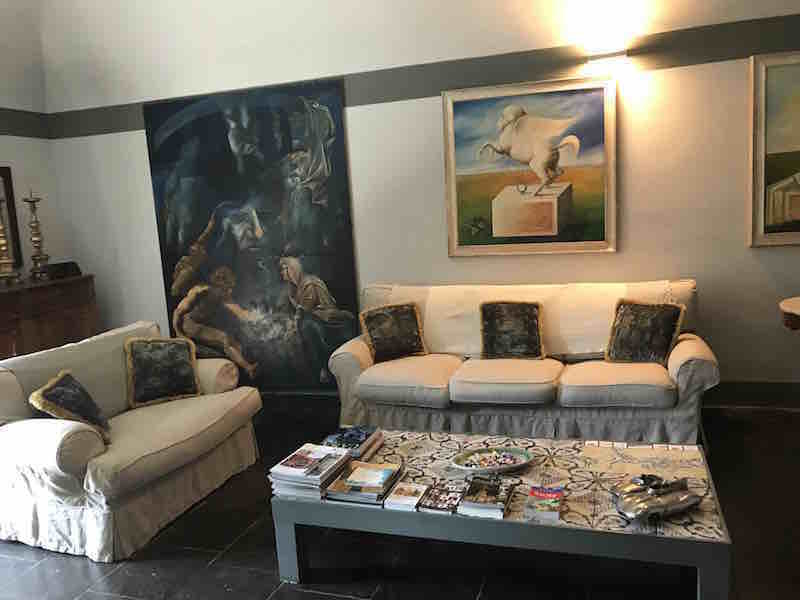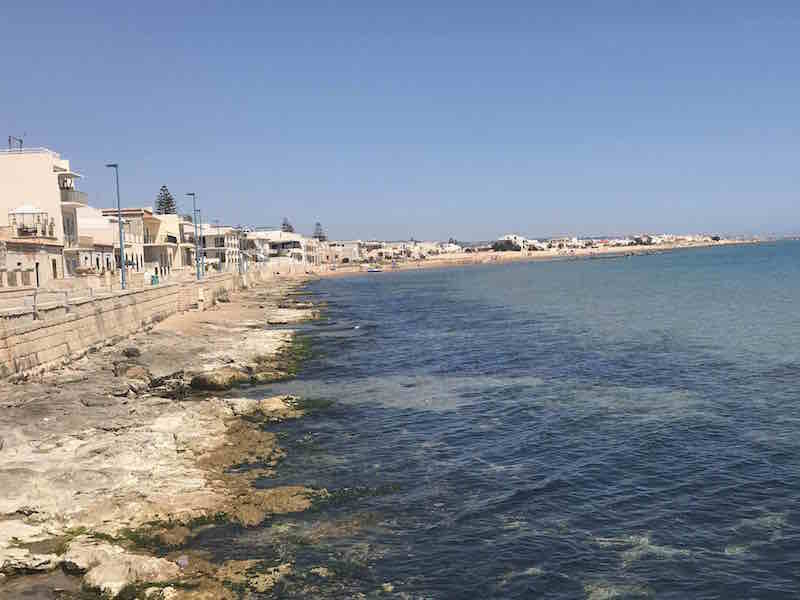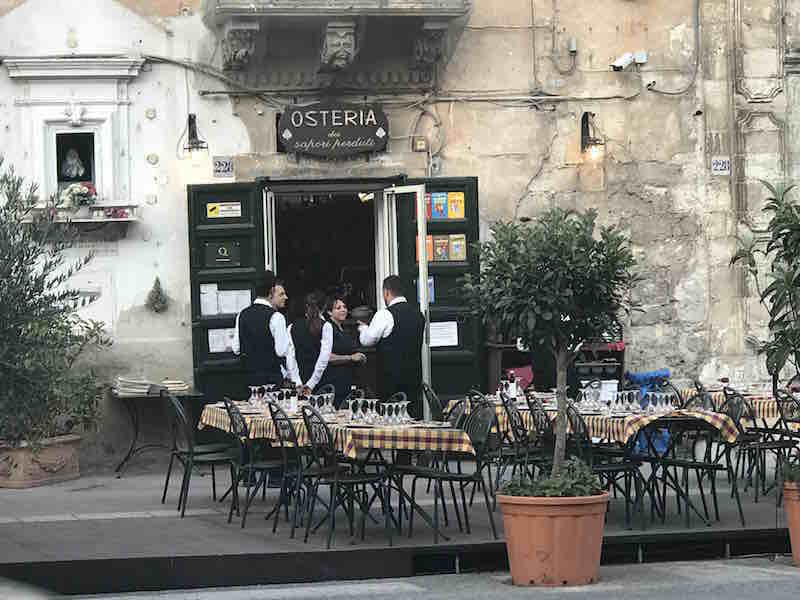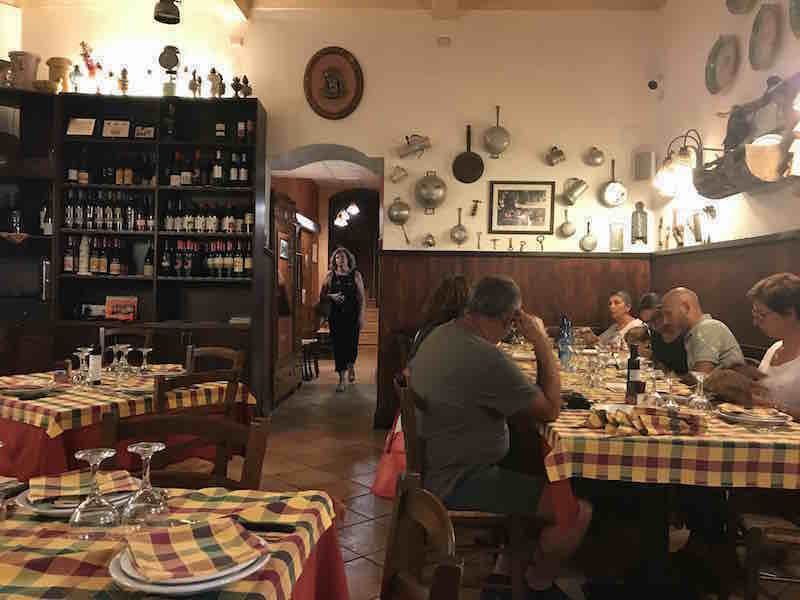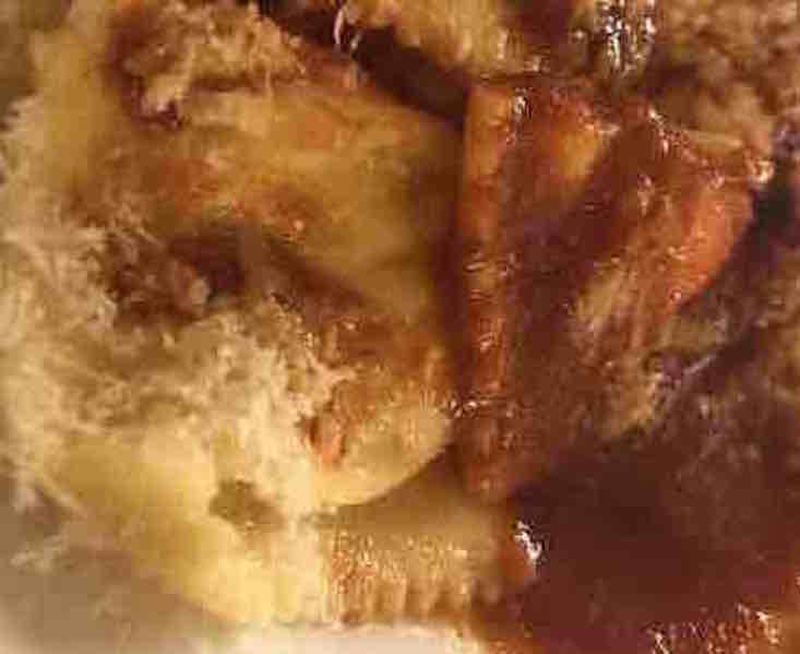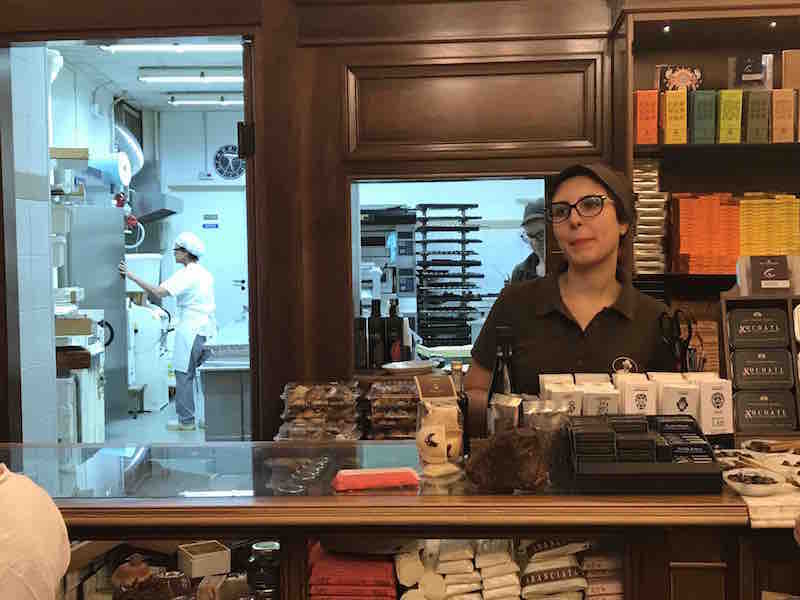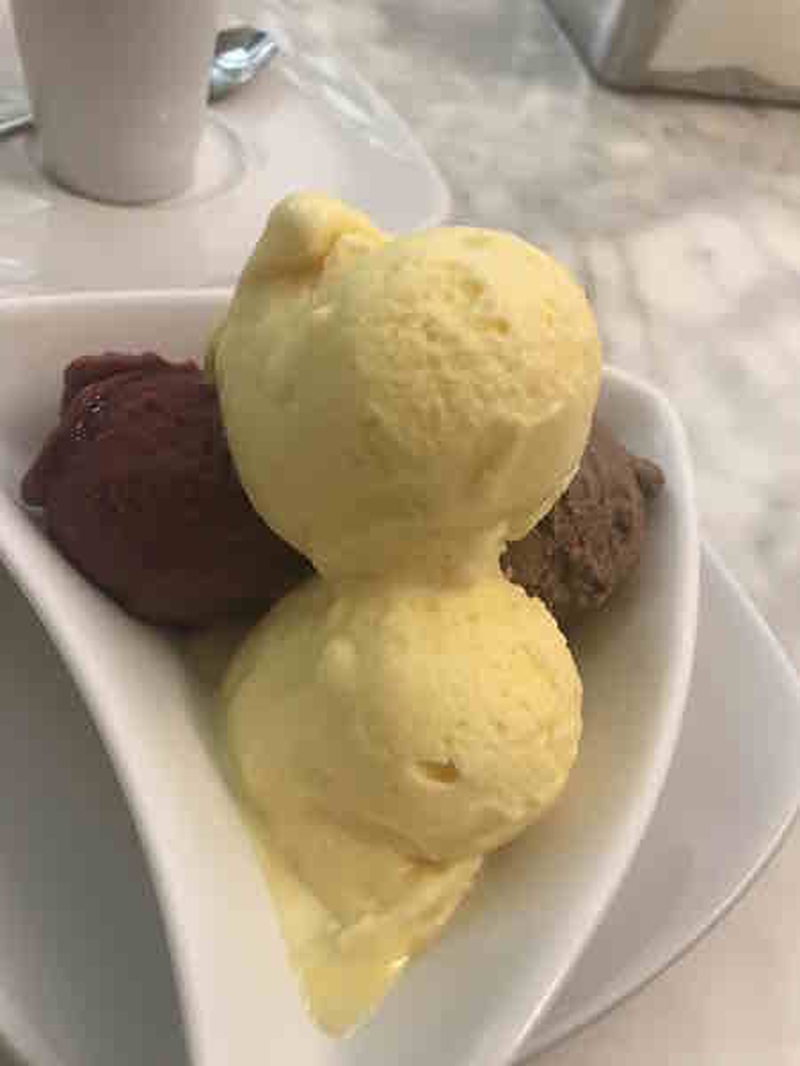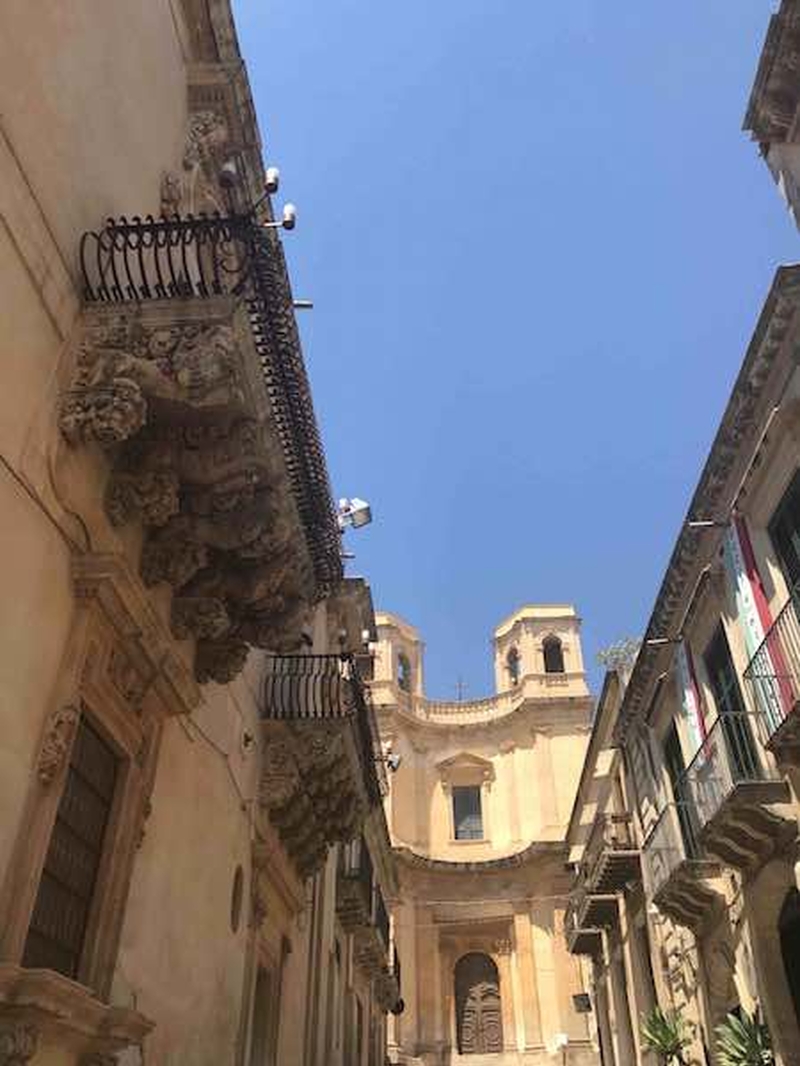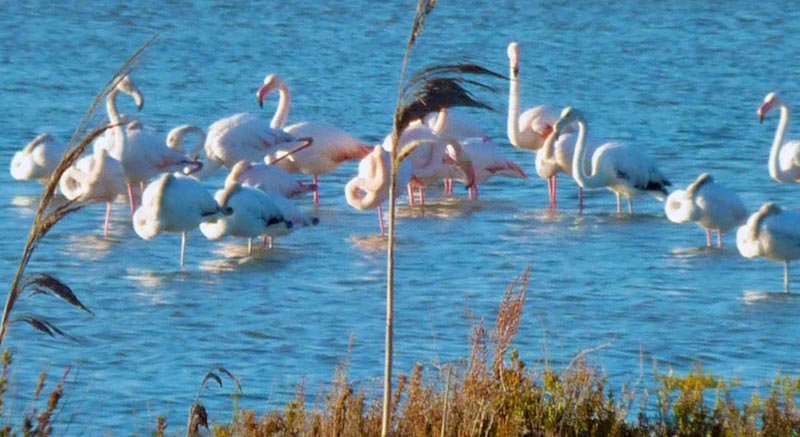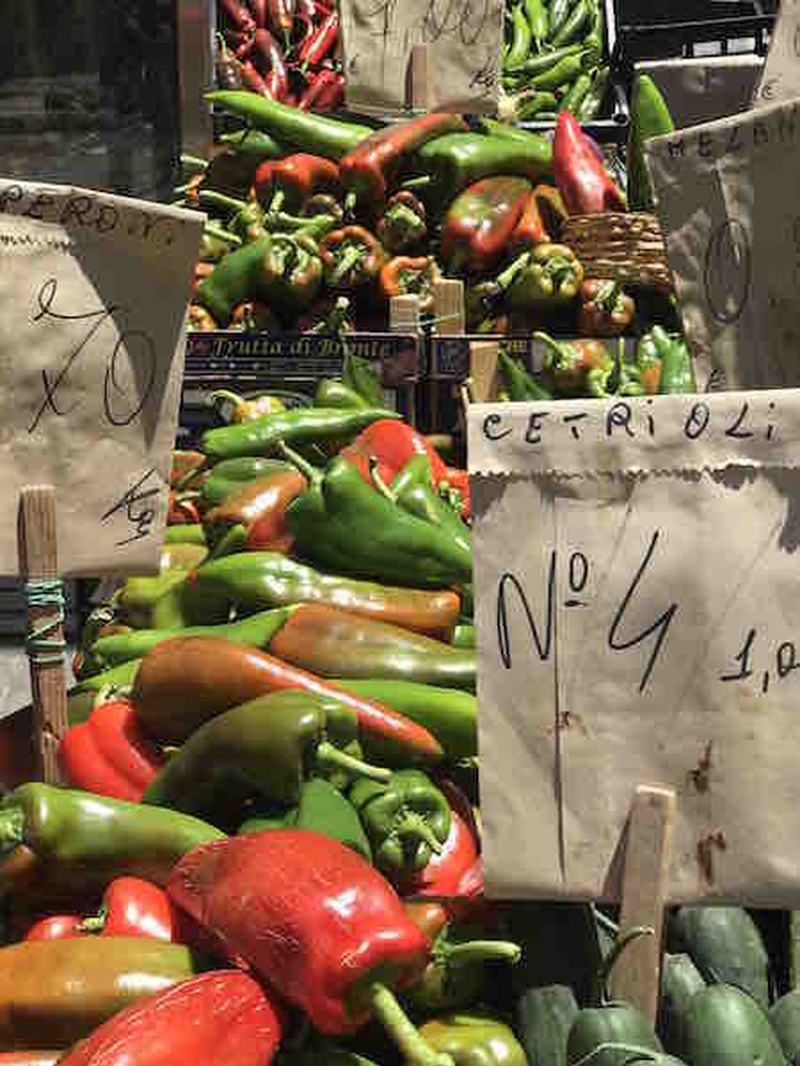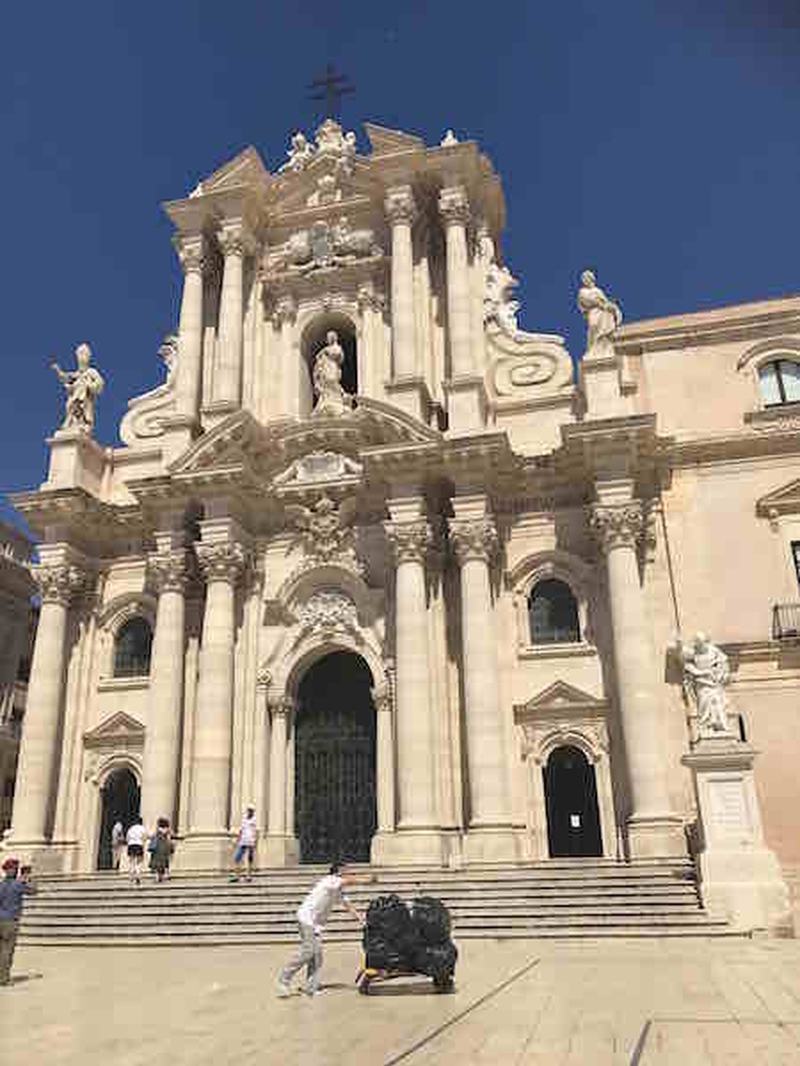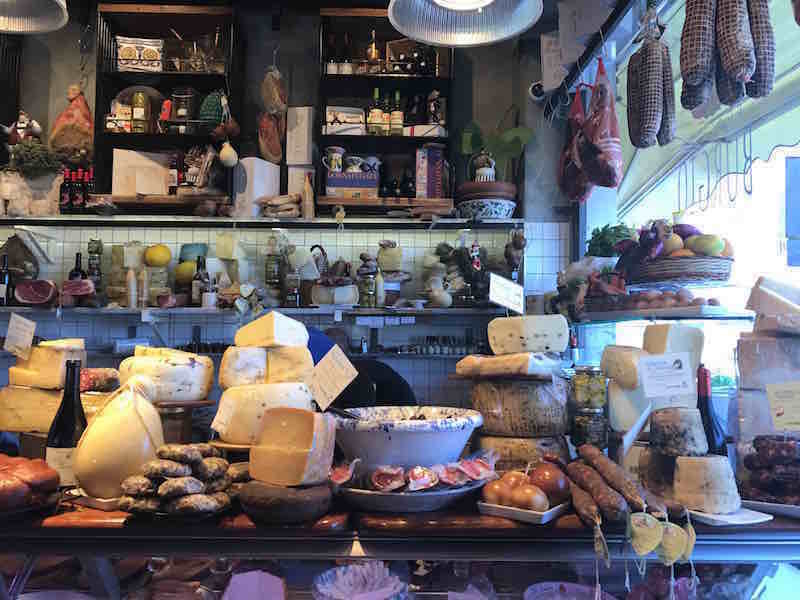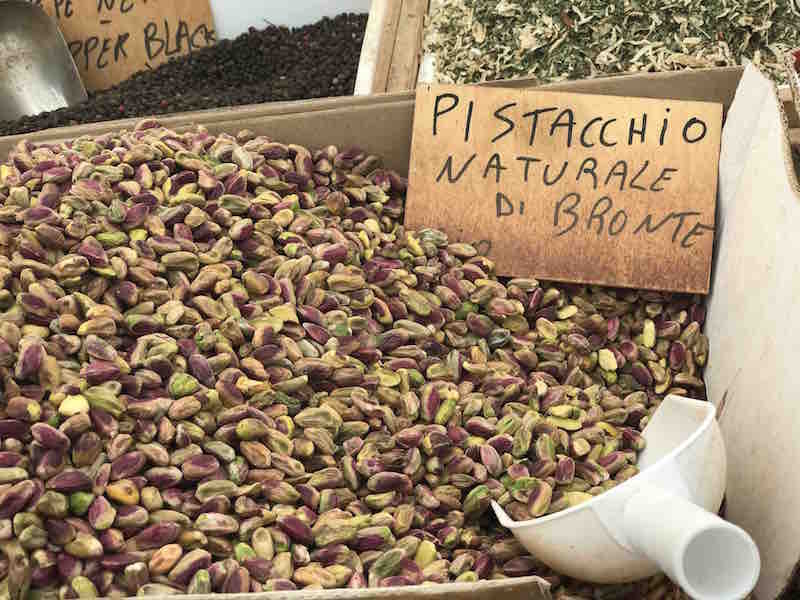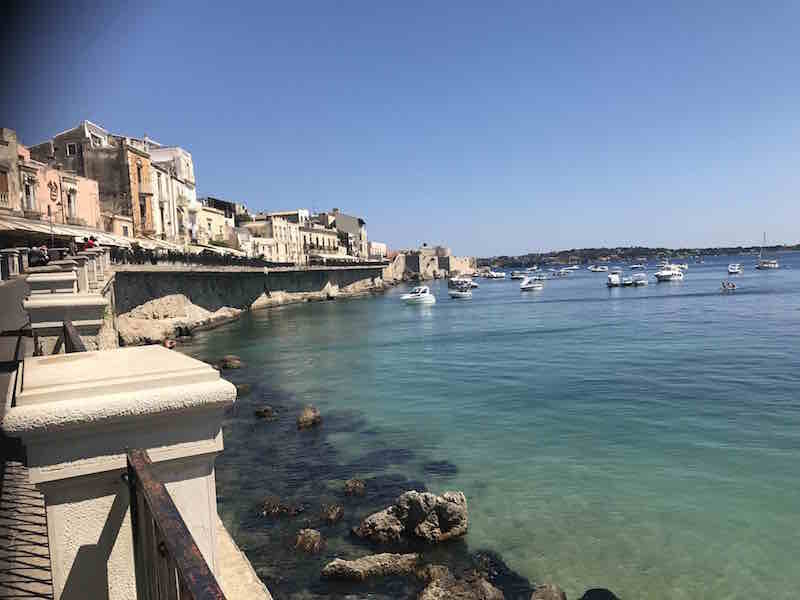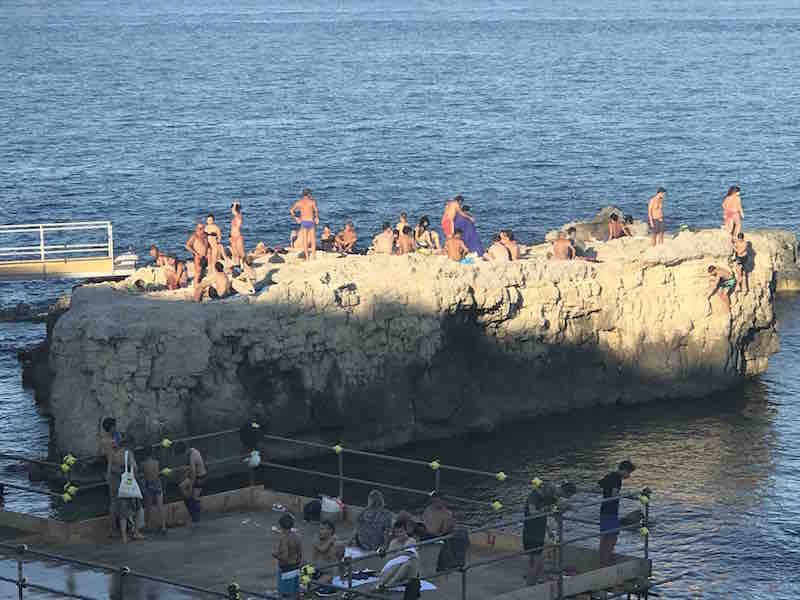But it’s a generous fish lunch that really wows Neil Sowerby in Southern Sicily
MATTHEW Fort in Sweet Honey, Bitter Lemons, the account of his food-seeking solo Vespa ride around Sicily, loved Modica best of all the Baroque towns clustered in the South West. It helped that it is the source of some of the world’s finest chocolate, but it also felt more lived in, less immediately touristy than its fellow holders of UNESCO World Heritage Status, the undoubtedly beautiful Noto, Ragusa and Siracusa.
We chose to stay in its ancient heart, Ortigia, confining ourselves to roaming its warren of streets and sipping terrace Negronis while a big red sun went down.
Couldn’t agree more. We got the same vibe during the Saturday evening passagiata along its main drag, the Corso Umberto I, in the lower town or Modica Bassa. Here families in their weekend finery paraded before gathering for an aperitivo and al fresco dining en masse. There is wealth here, witness the designer and gourmet shops, but it’s as understated as the vertiginous Baroque backdrop of its valley is not.
We were staying in Alta Modica, the old town, hundreds of steps above in the shadow of the magnificent Duomo San Giorgio (the architectural equal of its namesake cathedral in Ragusa). Even our apartment was called Casa San Giorgio, the second property provided on the island by our hosts, the Massimo Villas Collection. The previous one had been an isolated country villa; this was a palazzo gouged out of the weathered limestone hillside.
The stylish downstairs felt almost troglodyte, while the upstairs (which can be rented separately) had an arty, contemporary feel, its flowery terrace offering a stupendous view of houses stacked up along the junction of deep gorges.
The entire town was rebuilt in this ornate, unified style after the great earthquake of 1693, as were its town rivals. The plateau between them, with its dry stone walls, might almost be around Malham – with added sunshine and olive groves.
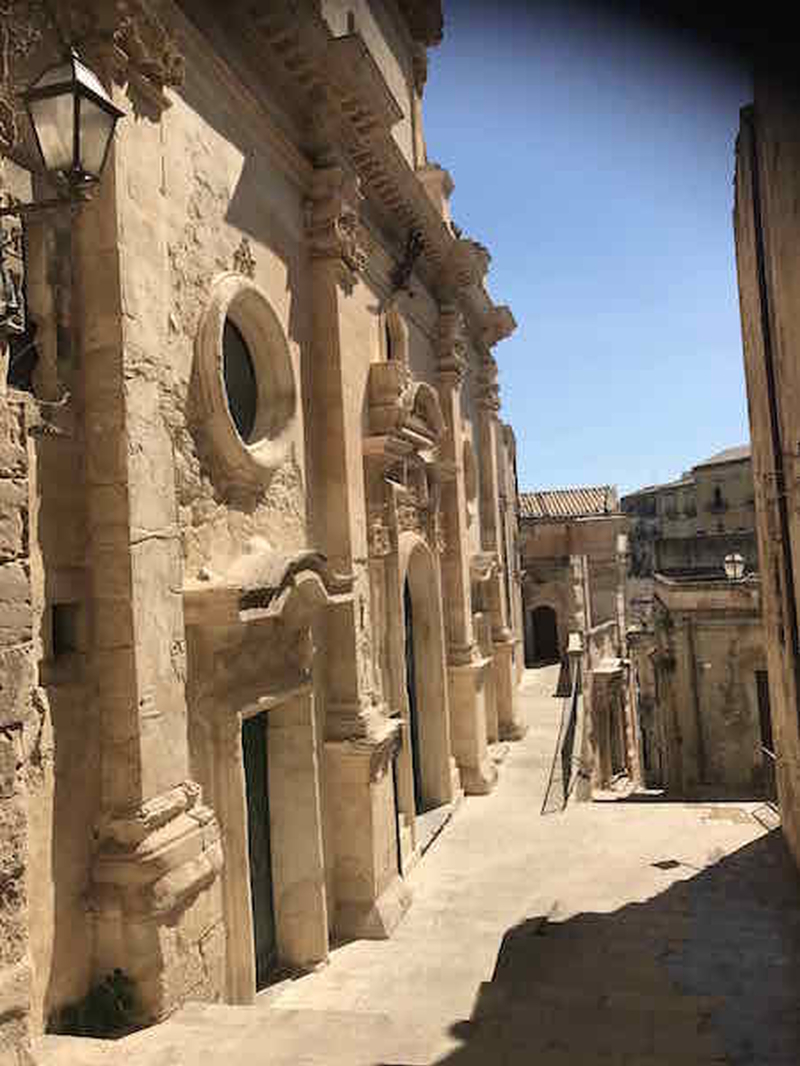
Great bridges spanned chasms as we drove over to Ragusa, which gives its name to the province. En route we got lost in the grid system of the upper new town but that made the near-traffic free streets of the original old town Ragusa Ibla all the more enchanting. All golden stone palaces and cobbled corners. In truth, it is slightly unreal, like some film set (and location inevitably for Montalbano). Where were the shops? Finally around the Piazza Polo we found a store selling award-winning local oil, wine and aged Ragusa cheese. They recommended an artisan bakery in a bar, so our picnic needs were satisfied.
As it turned out, the picnic would have to wait. The coastal area to the south of Ragusa is Inspector Montalbano country. You can even stay B&B in the telly tec’s beach house in the resort of Punta Secca. Now I’m no fan of the series but the settings, yes. And a foodie photographer friend had recommended a restaurant in the fishing town of Donnalucata, that had cooked some of the best fish he had ever ate. We set the sat nav.
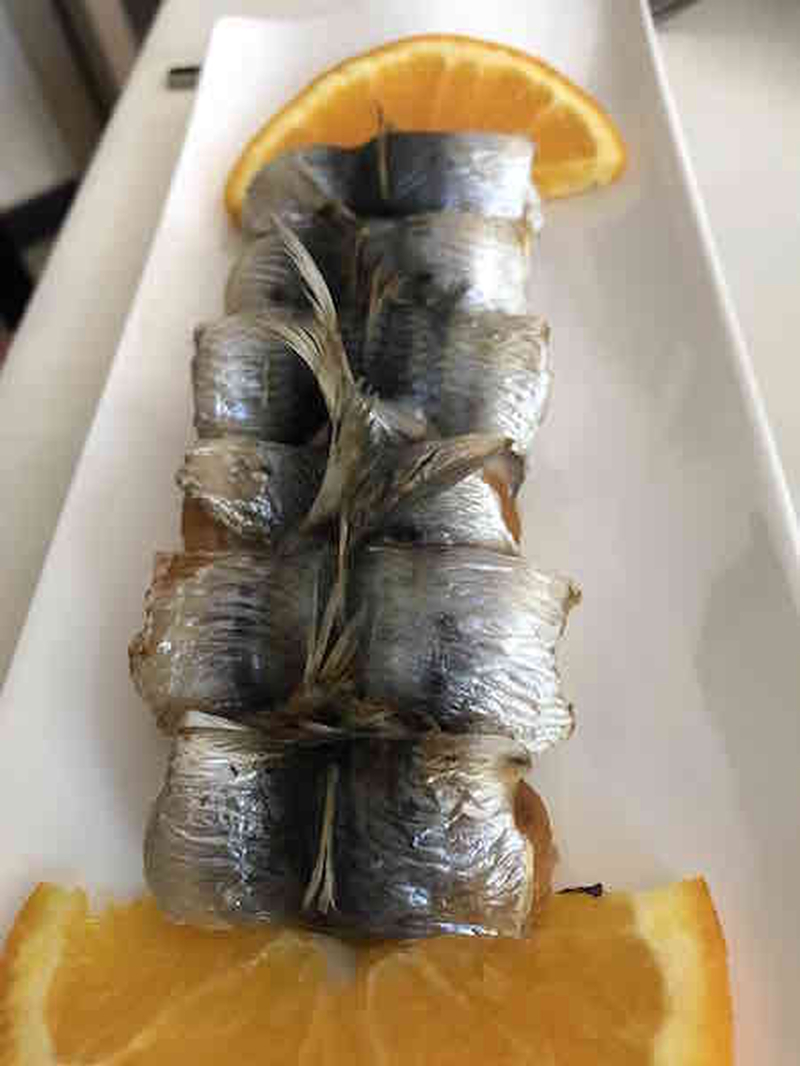



Having parked up by the curving beach, we walked though the noontime shimmer to Il Consiglio di Sicilia. Shut. Chairs upturned on the terrace tables. Then, around the corner appeared Roberta Corradin, co-owner with chef partner Antonio Cicero. “No one eats lunch in July, they are all at the beach,” she told us. “But my husband is in the kitchen. He will cook for you, just the three courses, is that OK?”
All this before we declared our mutual acquaintance. But then Roberta is not your usual restaurateur. An acclaimed food writer from Northern Italy, she is down in Sicily because on an assignment she fell for Antonio.
We fell for his food – from an outstanding starter of orange stuffed sardines via the best charred baby octopus I’ve ever had to a heavenly goat cheese stuffed cannoli. The Consiglio’s version of this tubelike Sicilian pastry was voted in the top six cannolis in Italy. “And the other five were specialist pastry shops,” Roberta told us as she offered us tastes of her various preserves as extras in this entrancing meal.
Afterwards we walked off the effects of a couple of glasses of a minerally small estate Grillo on a beach full of families and Montalbano lookalikes in speedos.
The Osteria dei Sapori Perdutiwww.osteriadeisaporiperduti.it (Inn of the Lost Flavours) is a quite different beast from the Consiglio. It became our local ristorante in Modica because it is indeed an (affordable) wallow in the past, attracting locals and visitors alike for its bollito and tripa and richly sauced pastas. I’d recommend the Coniglio alla “stimpirata“, a toothsome rabbit dish, perfectly accompanied by a deep Nero d’Avola red.
The main gastronomic reason to visit Modica, though, remains Chocolate with a capital C. You can’t escape the stuff in every shop along the Corso, but the ultimate shrine is the Antica Dolceria Bonajuto, site of Europe’s first chocolate factory (1820). What makes Il Cioccolato Modicano so special? Primarily because they follow the ancient Aztec method of rolling and crushing the raw cocoa – a throwback to its New World origins.
After that the cocoa was heated at a very low temperature – 50C – so the sugar used to sweeten it never fully melts. Tasted in situ the 100% cocoa solids version was a grainy, challengingly dry assault on the tongue.
Of course, not all the chocolate around comes close. Industrial cocoa is rife, just as seeking out classic gelato, sorbetto and granita comes with its disappointments. In Noto, most monumental and dashing of the Baroque towns, we sought in vain Matthew Fort’s gelateria discovery but found solace in the rather wonderful Caffe Sicilia on the Corso Vttorio Emmanuele, going for nougat and cherry flavours rather than the more experimental saffron or basil. We decided against following the local custom of having our ice cream inside a bun, but an accompanying doppo espresso was as exemplary as all the coffee we had on the island.
Noto is the gateway to the enchanting Riserva Naturale di Vendicari just six miles to the south, a bird sanctuary in a landscape of dunes and lagoons before you get to a sun-trap beach and bright blue sea.
It takes its name from a brick tower, the Torre Vendicari, once the centre of a tuna fishing hamlet. Stark and beautiful in the summer haze. From here sandy paths and boardwalks radiate out into the salt-pans. We sought in the vain to find the elusive flamingoes that throng here but were rewarded with sightings of herons and black storks.
A visit to this part of Sicily would not be complete without a stay in Siracusa (a convenient stop-off on the way back to Catania Airport). The city itself, once the greatest in the Mediterranean, demands several days to explore its antiquities. Overnighting, we chose to stay in its ancient heart, the island of Ortigia, confining ourselves to roaming its warren of streets and sipping terrace Negronis while a big red sun went down.
Musts for any fleeting visit? Certainly Ortigia’s evocative morning market lining the Via Benedictis and the food shops and fish restaurants that feed off it. You could go sea swimming off the Solarium Rocks or visit the Fonte Aretusa, a seafront freshwater spring connected with the myths of early Greek settlers, notably the story of the nymph Arethusa (it ended badly).
Sicily’s loveliest square, the apogee of Baroque, the Piazza del Duomo. After visiting the Cathedral itself, on the site of a Greek Temple and rebuilt after the 1693 earthquake, drop in on the adjacent Santa Lucia all Badia church to view Caravaggio’s exquisitely stark Burial of St Lucia, painted swiftly as the maverick artist was on the run for his life.
A few yards from the church is the entrance to the Ipogeo di Piazza Duomo, a centuries old labyrinth of underground tunnels, used by Syracusans as an air raid shelter during World War II (the story is told in a exhibition. Going down there was an eerie escape from a riotous festival crowding the main tourist drag, the Via Cavour.
Light and shade, so very Sicily.
Fact file
Massimo Villas Collection offer a huge range of holiday homes across Sicily and other parts of Italy. They still have availability in September and October 2017 – a a great time to visit when the weather is still sunny and warm, the rental prices and flight prices are more reasonable.
Neil Sowerby stayed at the Casa San Giorgio – rental price from €850 to €1,750.
To book ring +44 (0) 203 908 7590 or email enquiry@massimovillas.com. T
He flew from Manchester to Catania with easyJet and booked car hire with Europcar.
He stayed Air BnB in Ortigia the spare night before his return flight to Manchester.





